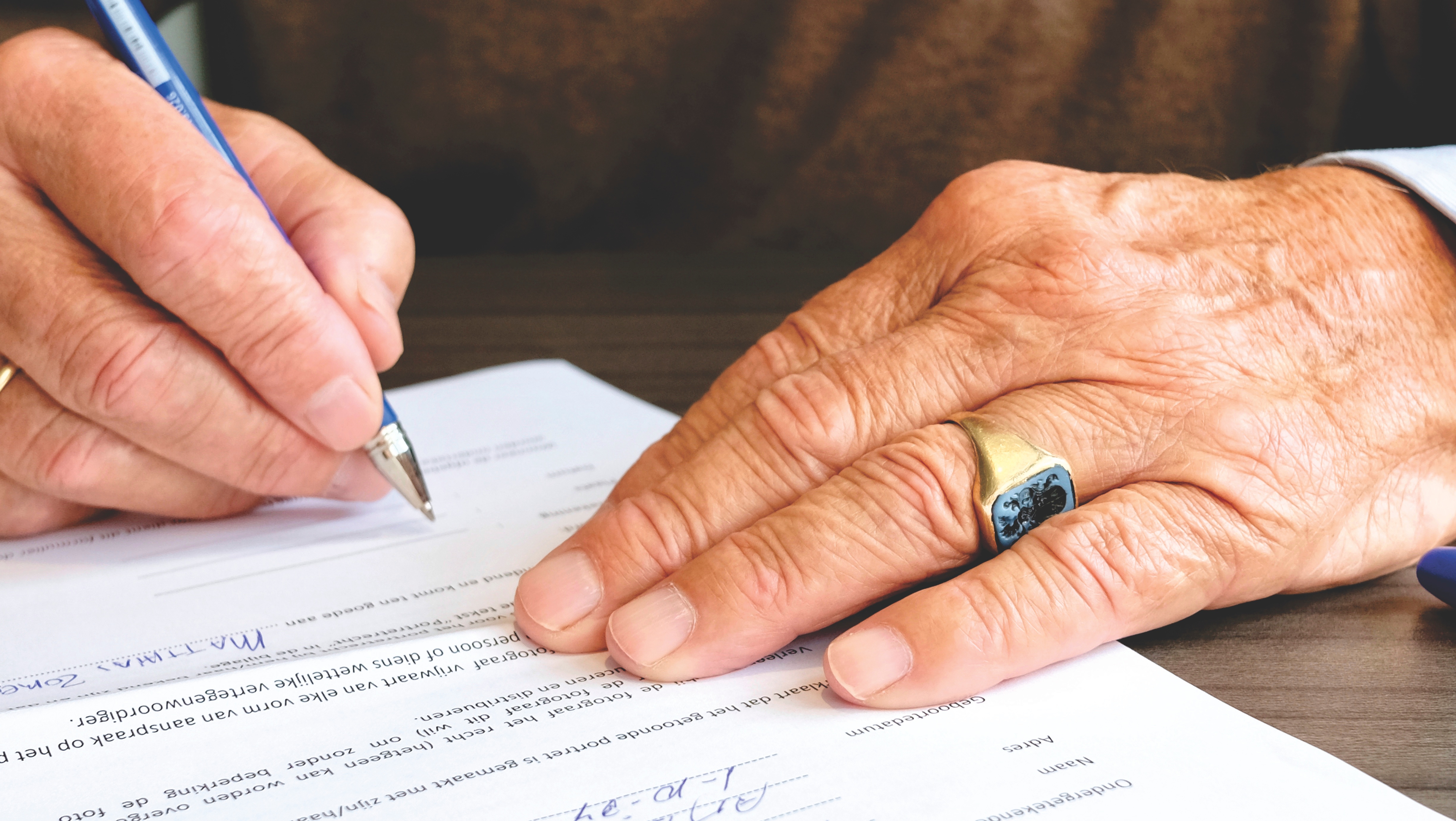Table of contents
Automating signing documents online with an electronic signature solution offers huge benefits, as the signing process goes from being tedious to quick and efficient. It also avoids sending the documents by post which helps to save time and money.
In this post we want to answer the main questions that often come up about signing documents online with electronic signature solutions.
The problem that the electronic signature solves: signing remotely and being legally valid.
Computers, and nowadays of course smartphones, are now basic professional tools with many uses that make the everyday work of millions of people easier and help us to be increasingly more efficient.
For example, every day we print out less documents thanks to how easy it is to send files by email and also because we can file them away online, in cloud-based storage.
However, if as well as sending and storing documents what happens when we need to have them signed by both parties? Electronic signature solutions have been developed to help to remotely sign documents and are legally valid.
Due to the different electronic signature solutions that exist today, we save having to print out documents to then sign and we also save having to send these documents by post for the other party to sign.
We often receive questions on the different ways to sign documents online. Here we answer some of the most frequently asked.
5 most frequently asked questions on signing documents online
1. Is entering my name in a form and clicking send a legally binding signature?
Yes, as long as you can show the identity of the person who completed the form and who clicked on send.
In Europe, the law that regulates electronic signatures is the eIDAS Regulation, which defines what constitutes a legally binding signature.
According to the eIDAS Regulation, completing a form with your name and clicking on send, is a legally binding electronic signature, but it is a simple signature.
And the problem with simple signatures is that it is very difficult to prove who signed it. So it has several inconveniences before a court of law:
Anyone can write a name in a form. In order for the contract to be legally binding, there should be a way to prove that the name was written by the person who the name represents.
So that everything established in the document is legally binding when a document is electronically signed, the document should also be linked to the signature itself. This ensures that if something changes in the document, for example, somebody changes a clause, the change will be detected.
To solve this problem, ideally a signature that is uniquely linked to the signatory is used, and that does not require any special device to be able to sign it. This type of signature exists, in the eIDAS Regulation it is called an advanced electronic signature.
The advanced electronic signature offers more legal guarantees than the simple signature, as it can prove the identity of the signatory.
With our advanced electronic signature, the signatory has to sign the document with their personal signature, using a tablet, smartphone or computer.
To identify them, we accurately determine where they are signing from, we register the address of origin and destination of the request and time of the signature, and we capture biometric data of the signatory’s handwriting, such as the speed or rate of which they sign. This way, we can make this information available to a handwriting expert so that they can analyze the questionable signature in case of dispute.
We collect all electronic evidence on the time, place and device the signature was done on in an evidential document or audit trail.
More information: What exactly is an audit trail and what electronic evidence does it contain?
In the United States, the laws that define the legality of electronic signatures are called E-Sign Act and UETA Act.
2. Do you need to sign various pages of a contract with the initials in order for it to be considered signed?
With most electronic signature solutions it is not necessary to sign with initials on all the pages of a contract.
Adding initials to the pages of a contract is a regular practice when signing contracts with a pen on paper. The initials, as well as being used as a signature, make a kind of “personal mark” that shows that you have read that specific page.
The aim of this practice is to avoid including more pages after signing a contract. But what it cannot avoid is that a professional modifies the content of the contract, once read, signed, and “marked” as there are ways to alter the content of the paper.
However, with an electronic signature solution as Signaturit offers, writing your initials on various or all the pages of a contract is not necessary, as all the information in the document together with the signature is marked with a time stamp.
With the time stamp what we do is encrypt all the information, including the signature, and this way ensure that the integrity of the information cannot be altered in the contract. If it was altered we would detect it, as the identifying value of the altered contract would not coincide with the original contract.
Is the electronic signature legal?
Yes.
Electronic signatures are legal in the European Union, and the law that regulates them is the (EU) Regulation Nº 910/2014, known as the eIDAS Regulation.
In Article 25 of this regulation the legal effects of electronic signatures are established as follows:
“An electronic signature shall not be denied legal effect and admissibility as evidence in legal proceedings solely on the grounds that it is in an electronic form (…).”
Our electronic signature software was designed from the beginning to meet with the eIDAS Regulation, as well as US Laws, called the UETA Act and E-Sign Act.
So, with Signaturit you cannot just request and make advanced electronic signatures in accordance with the EU regulatory framework, but our electronic signatures also meet the requirements established in United States laws.

3. Is it possible to store a signature and reuse it to sign other documents?
Yes you can, but you risk another person copying and pasting the image of your signature for you, onto any document and without you knowing about it.
If you save an image or photo of your signature on your computer and you use it to sign documents, you are signing them legally. It is in fact your simple signature.
The problem with this practice is that you never know who could access your computer. So when the time comes, it would be difficult to prove that it is always you who is using the image of your signature in .png or .jpg format.
The unique signature in each process increases its security and avoids any type of identity fraud, manipulation or theft
That is why Signaturit is not allowed to store signatures to be used again or for widespread use. If we were to do this, our advanced electronic signature would no longer be advanced, as we would not be able to capture the biometric data of the signatory, and we would not be able to prove their identity.
4. What is the difference between a handwritten signature, digital signature and electronic signature?
A handwritten signature is the traditional one that we can do with a pen on printed paper.

A digital signature is the process by which a document is signed online. It is a legal signature but with no legal status. In other words, its purpose is not to verify an act of will by the signatory, but it is a process to encrypt the data of a document and to give greater security.
An electronic signature, according to the definition in the eIDAS Regulation, is “data in electronic form which is attached to or logically associated with other data in electronic form and which is used by the signatory to sign.”
So the electronic signature is electronic data that accompanies specific information also in electronic form and, at the same time, is a legal concept that aims to verify the will of the signatory.
5. Should my electronic signature be identical to my handwritten signature?
No. At Signaturit, as we capture the biometric data of the signatory and with them we can identify it. It is not an issue if the electronic signature is not exactly the same as the handwritten signature of the person.
The biometric information that we obtain provides information on the handwriting which includes the points that form the signature, its position, speed, rate and finally, in the devices that allow it, how much pressure was applied.
If a signature made with our advanced electronic signature solution is questioned before a court, this biometric information can be provided to the handwriting expert, who could compare it with a signature made by the supposed signatory, using our electronic signature tool and with the same device that was used to make the questionable signature.
CONCLUSION
All Signaturit electronic signatures are legal, but each one offers different levels of legal security. Choosing one or another will depend on its use and the requirements that the company has in terms of legality and security of information.
Specifically, our advanced electronic signature allows to identify the signatory and it is a guarantee of the integrity of the data signed. Also, presenting a signed document with an advanced electronic signature is accepted as legal evidence in a trial.
Documents that are electronically signed with our advanced electronic signature can reliably prove to the parties what, who, when and where an electronic document was signed.
If you have any questions about which electronic signature solution best suits you, or any of our services – certified email and validating identification documents – please send us an email [email protected], get in touch with us with the following form, or call us on +34 960 03 12 03.






